This cute little wool hat is more important than it looks, and comes laden with future possibilities. It is one of the first items knitted in more than a century with raw wool from a Connemara sheep called Cladóir, known for the softness of its wool and assumed until recently to be extinct, but which has re-emerged in flocks in Connemara. The word in Irish means “shore dweller”, and the Cladóir was a common Irish breed prior to the Famine when it was displaced by imports of Cheviot and blackface sheep. With Roscommon GAA recently making headlines for using the wrong breed of sheep on their crest (like the Cladóir, the Roscommon sheep also has a white face, unlike the black face on the crest), native breeds are in the news at the moment.
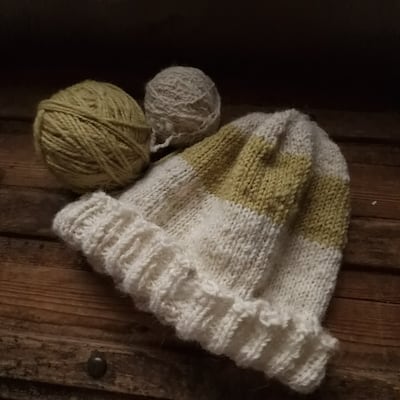
At a recent event in the Connemara National Park celebrating the Cladóir, a number of these feisty white-faced residents were shorn, their fleeces spun, dyed and some of the yarn on the day crocheted or felted into small items by Sandra King. This little hat was knitted by Susan Wilde with yarn dyed by King, a wool crafter based in Co Clare. “It could be the finest wool of any breed in Ireland,” says Seán Cadden, a former Teagasc agricultural adviser who is on the Cladóir Sheep Preservation Committee.
The hat was knitted in fine, soft two-ply wool, one section dyed with marigolds. The third section is in a heavier worsted yarn to accentuate the wool’s smoothness and sheen, so the hat is a mixture of style, texture and weight, beautifully soft near the skin. There are now plans to preserve and develop the remaining Cladóir sheep as their own distinct breed.
“Their wool could be another product for craft workers,” says Cadden, explaining that most of the Cladóir sheep were owned by the Martin family in Ballinahinch in the 19th century. “When they went broke during the Famine, what we would call today vulture funds moved in, the estate was sold and small farmers were pushed into south Connemara, where there were plenty of shore fields. There the Cladóirs fed on seaweed and that’s how the sheep got their name.” An 1893 report for the Congested Districts Board found more than 800 farms in south Connemara with some 2,500 sheep in little flocks of two to 16.
READ MORE
With a distinctive white head, no horns and light bones, it is not a meat but a wool breed. Sheep farmer Suzanna Crampton, who farms Zwartbles sheep in Kilkenny and is a member of the Cladóir Sheep Preservation Committee, explains: “When modern farming pushed for meat, their small frames did not suit the meat market and only a few independent-minded farmers kept them. We need to rescue and salvage them for their importance place in Irish history and heritage.”
Twenty years ago, the late Tom King, a Westport cattle dealer who became interested in the breed, bought some Cladóir sheep, which were in turn purchased by the National Park in 2019. The object of the preservation committee is to accelerate a breeding programme with local farmers, and have the sheep formally recognised as a distinct breed with a direct line provenance to the west of Ireland.
“Crafters all over the world would want to knit a soft Irish fleece into something beautiful,” says Crampton, whose blankets woven by Cushendale Mills in Kilkenny from her Zwartbles flock sell internationally. “It will be a certificate of authenticity, because this is a fantastic fleece, and if used correctly and managed appropriately, could become an internationally recognised breed.”
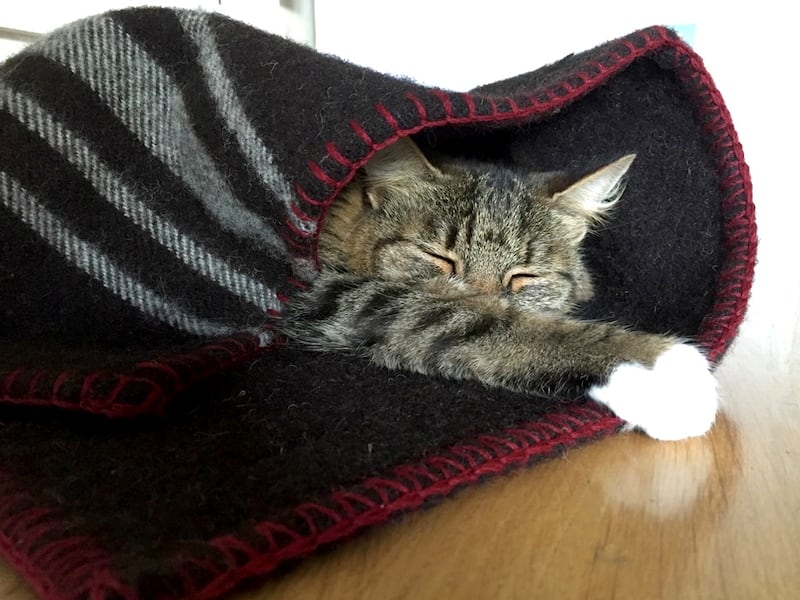
According to Máirtín Ó Flatharta of Aran, a fountain of knowledge on Irish sheep history with his own flock of 75 sheep on 50 acres, no history of the Aran sweater has ever mentioned sheep except for one book called Pure Wool by Sue Blacker. In his opinion, the wool from the Cladóir is very similar to Shetland, and the breed goes back hundreds of years in Ireland, where sheep have been farmed since the Neolithic period.
The figures speak for themselves. In the 17th century, flocks of up to 20,000 were recorded, but a huge increase began in the mid 19th century – by 1900 there were 4.4 million, and in the 1990s this had risen to nearly 10 million, the most popular breeds being the imported Scotch blackface and Leicesters. Today that figure is about four million.
“Ireland is a great place for growing wool. In the 19th century, the Roscommon sheep was exported to South America and Moscow,” says O Flatharta. “If Cladóir wool can be as fine as lace, it will have a future. Ireland in the ‘60s was the second-highest in the world after New Zealand for prices for wool. It’s all down to meat now.” His fleeces are sent to Cornwall to be made into yarn, then handwoven in Donegal into sweaters, which he sells on his website aransheep.ie.
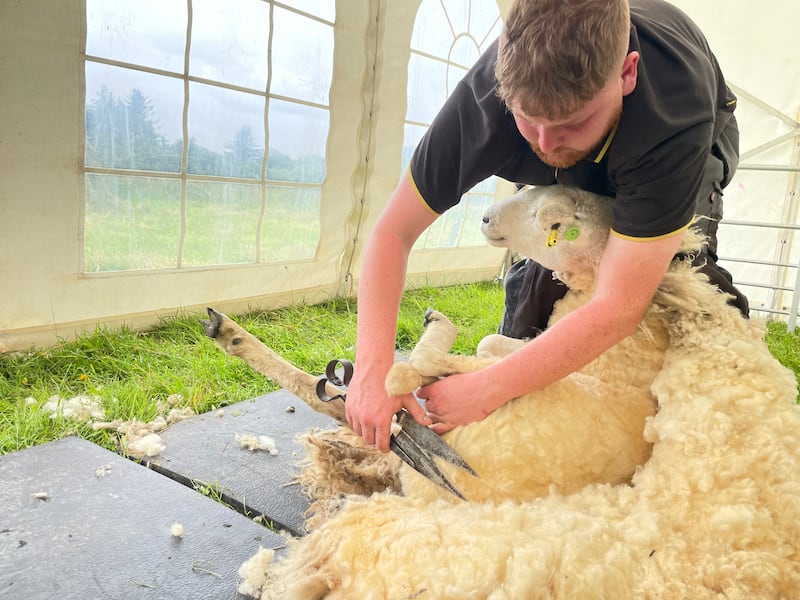
In Galway, Blathnaid Gallagher of the Galway Wool Co-op has been very active and successful in raising awareness of another native Irish breed, the Galways, having formed a voluntary organisation to restore the cultural integrity of its wool. At their third-year wool harvest in Athenry today, Galway sheep farmers will bring their wool and get a €2.50 per kg price per fleece with Dooleys Wool Bedding, who only use Irish grown wool in their product, sponsoring the best fleece award. A traceability study is now being organised with TU Dublin. “Traceability is essential as it allows for transparency and accountability throughout the supply chain, and plays a crucial role in promoting sustainability and ethical practices,” says Gallagher.
Already young fashion designers like Conor O’Brien in Dublin and Aoife McNamara in Limerick are committed to using Irish wool, and other companies involved include Donegal Yarns, Eriu, Ecological Building Systems, Ceadogan rugmakers and Rhyme Studio carpets in New York. But one of the most shocking aspects of this story is that wool is still considered a waste product by the EU, like offal – a classification that was applied after the foot and mouth outbreak in 2001 and never revoked.
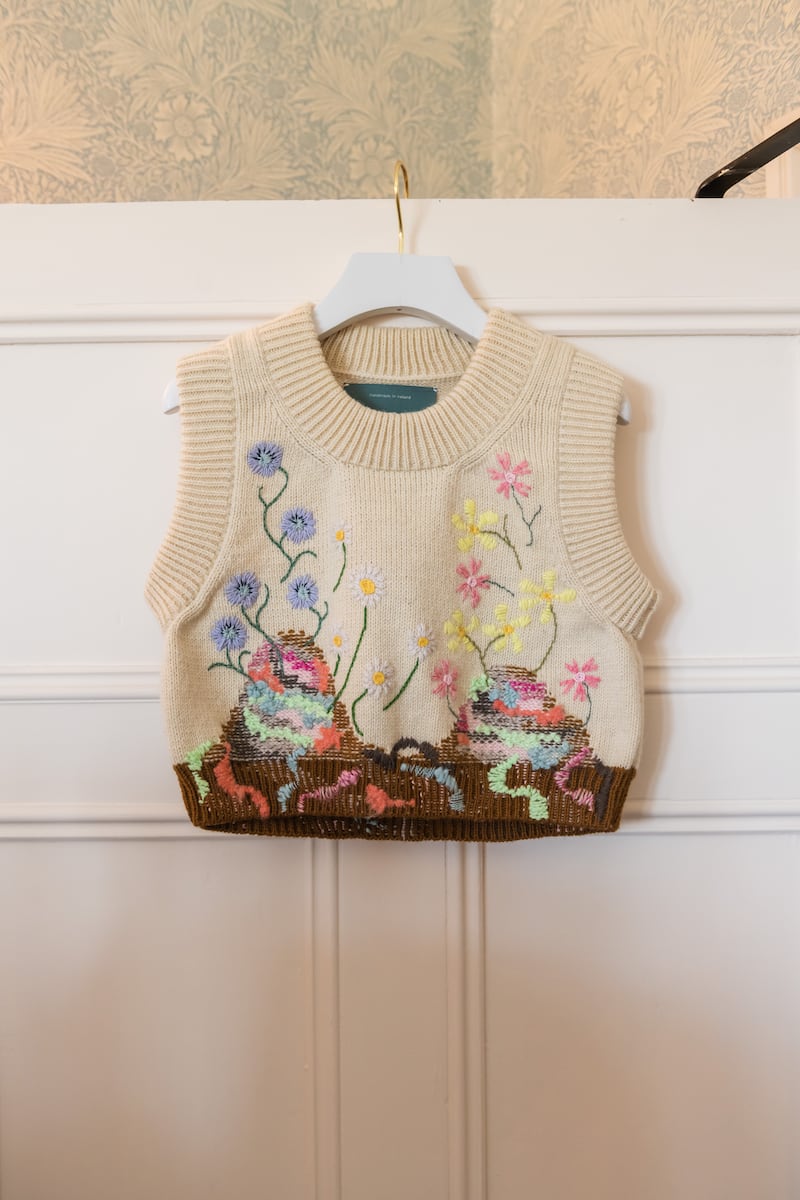
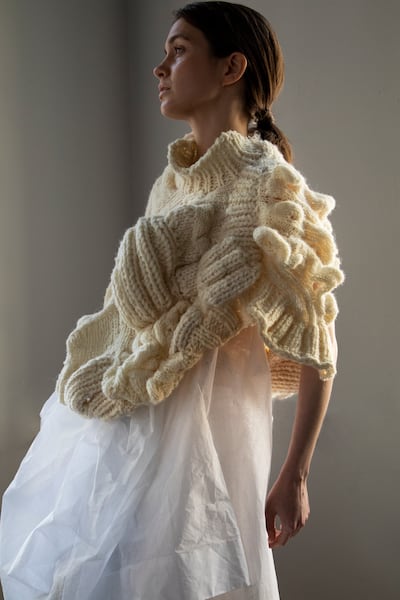
Wool has many uses other than clothing. It can be used for insulation of buildings, as a composite for cars, shoes and house construction. The Irish company Woolow, in Galway, uses it for duvets and pillows and stresses that its hypoallergenic properties are perfect for those with hay fever or dust allergies.
In Ireland we have the most valuable natural biodegradable fibre on the planet, certainly better than thirsty cotton.
“For this venture to move forward we need to gain respect for the wool as a product,” says Crampton. “We want wool to stop being considered waste. It never was. It is a product that is environmentally sound, eco-friendly, sustainable, sequesters carbon and can be used for clothing, for insulation in buildings, as a composite for cars, shoes and houses. Airlines were using wool carpets because of wool’s fire-resistant properties, though Covid shattered that market. So wool in the context of sustainability, environment, the circular economy and as a sequester of carbon is hugely relevant in this time.”
For knitwear designer, teacher and yarn specialist Carol Feller of Stolen Stitches in Cork, soft Cladóir Irish wool “would be an amazing development of the Irish yarn revival because softness next to the skin is a huge defining factor. Customers often are compromised between supporting local breeds versus more versatile ones. This will give them everything.”
The Galway Wool Co-op’s Native Wool Harvest takes place on July 22nd in Athenry Mart, and includes a Meeting of Hands art exhibition curated by Michelle Hickey of LSAD


















